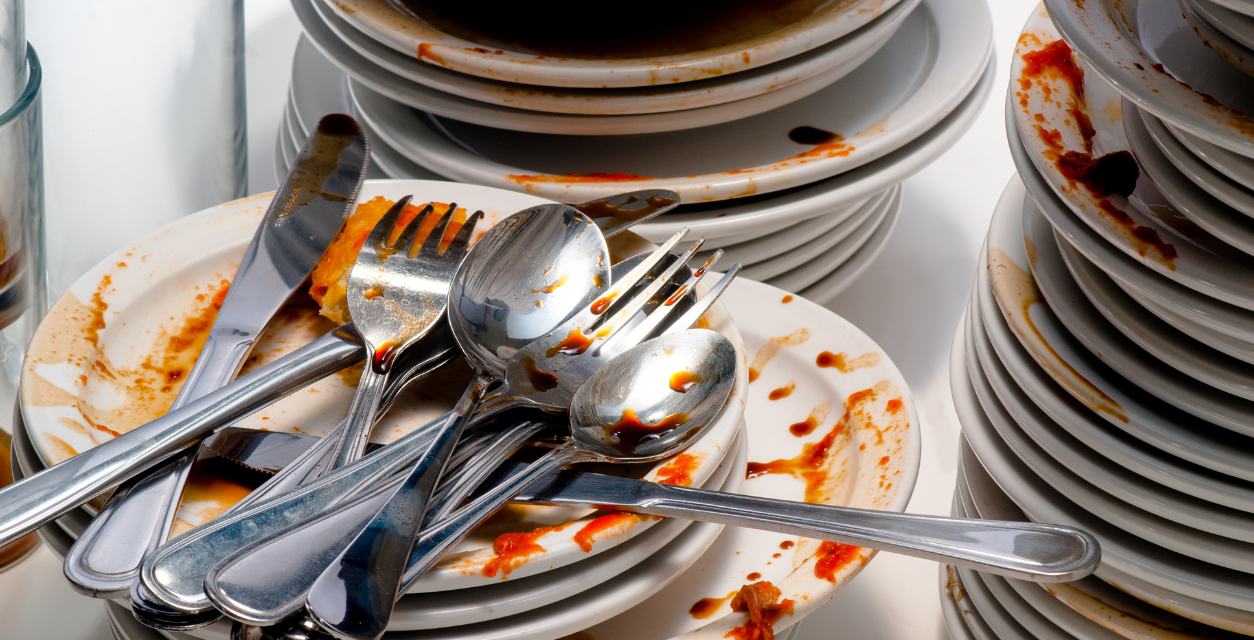I had a dinner party the other night for friends I hadn’t seen in a while. I decided to go all out –starters, salad, main course, and desserts. Delicious! On the night, sixteen of us sat around a large table, laughing, remising, and really having a terrific time.
I’m sharing all this with you because once my friends went home (happy and full!), I scanned my kitchen and saw stacks of empty plates, silverware, wine, and water glasses. I realized my night wasn’t quite over. My husband and I had to do the dishes!!
Actually, clean-up really isn’t difficult. You load everything into a dishwasher, press “clean” and off you go. Have you ever thought about how easy it really is?
I am grateful to Josephine Cochrane, inventor of the first commercially successful, practical dishwasher. No, she was not the originator. That was Joel Houghton in 1850. But Josephine one-upped him: she perfected it. Whether you use a Whirlpool, Miele, KitchenAid or some other brand, your dishwasher – even today – is based on Josephine’s 1886 patented concept to use water pressure to clean dishes instead of “hand-cranked scrubbers”, which were the unusable feature of the original invention.
Josephine was a socialite married to a wealthy merchant, William Cochran. She had frequent dinner parties! However, she did not see the dishes pile up as I had after mine; her staff were the ones left to clean up – by hand. Often, they would break or chip the fine China plates, to Josephine’s constant frustration. As the story goes, one evening, she decided to clean the dishes herself. But, like her staff, she too broke or chipped her tableware. It was then that she famously decided, “If nobody else is going to invent a dishwashing machine, I’ll do it myself.”
How many times have you thought about doing/creating/writing/learning something but, whether through your own limiting beliefs or circumstances perceived to be beyond your control, you just couldn’t make it happen?
Josephine Cochrane’s story is an inspiration to us all.
Josephine wanted to release women of the thankless task of washing dishes, and she envisioned her machine to be in every home across America. She had conviction, vision, and a daring goal. Nothing was going to stop her.
Shortly after she decided to try building a dishwashing machine, her husband died. That was in 1883; she was 45 years old. Josephine had EVERYTHING going against her:
She was middle-aged, single, without professional training, had no significant money of her own to build, market and launch this invention nor was she able to borrow money from a bank to fund her idea. As if that weren’t enough of a deterrent, that was also a time when women were generally not accepted as being able to invent, innovate, patent, market, and sell anything. It was truly a man’s world.
Yet, Josephine persevered.
She overcame her gender issue, and lack of professional training. The men she initially hired to build her prototype told her the idea was impossible. They refused even to try. Eventually, she hired a man named George Butters, who built the machine based on Josephine’s specifications – and it worked. She filed for a patent using the name “J.G. Cochran”, so that the patent office wouldn’t know it was a woman making the request. She founded the Garis-Cochrane Manufacturing Company to make her machines.
Lacking sufficient capital for advertising and PR, and unable to borrow money from the bank (she was a woman, after all), Josephine took an entirely unconventional path to market her invention. She persuaded the organizers of the 1893 Chicago World’s Fair to include her washer in the Machinery Hall Exhibit, along with the inventions from Alexander Graham Bell and Thomas Edison. Moreover, she managed to install her dishwashers in nine restaurants and pavilions across the Fair. Ultimately, the judges gave her the highest prize for “best mechanical construction, durability, and adaptation to its line of work.” This was a PR coup!
Josephine realized the home market wasn’t ready for her invention. Her costs were much too high; most homes in the early to the middle of the 20th century did not have access to constant hot water; and cultural attitudes towards women in the home hadn’t budged. Americans didn’t think of women’s time as being valuable. So, while no woman liked doing dishes by hand, there really was no feasible alternative.
With all that, Josephine pivoted and focused on selling her dishwasher to hotels and restaurants. For them, cost, as well as access to hot water, was not an issue. Her initial dishwashers sold for $800, or about $21,000 today. She repositioned her invention by taking advantage of changing cultural and social attitudes. She emphasized the importance of cleanliness following the discovery of viruses in the 1890’s. She demonstrated her dishwasher’s economic efficiency compared to the growing hotel and restaurant labor costs as people were beginning to eat out more and vacation away from home.
In 1926, KitchenAid bought her company. Josephine did not live long enough to see her dishwasher become a household necessity as she had set out to accomplish. But by the early 1960’s, two major shifts occurred that changed everything: both plumbing technology and cultural attitudes regarding women’s roles advanced. More homes had access to high pressure hot water and Americans were beginning to value the work women did at home. The original design was updated, which decreased cost. These factors together elevated the dishwasher to a more important appliance.
Josephine was posthumously inducted into the National Inventors Hall of Fame in 2006. In 2020, global dishwasher sales were approximately $2.7 billion, according to Grand View Research.
There are so many lessons Josephine Cochrane can teach us all. Here are just a few:
- Your background doesn’t matter as much as your commitment.
- Stay true to what you believe in and your vision and goals will remain clear.
- If someone tells you no, keep going until you get to yes.
- Be willing to think outside the box.
- Don’t be afraid to fail and be prepared to pivot.













